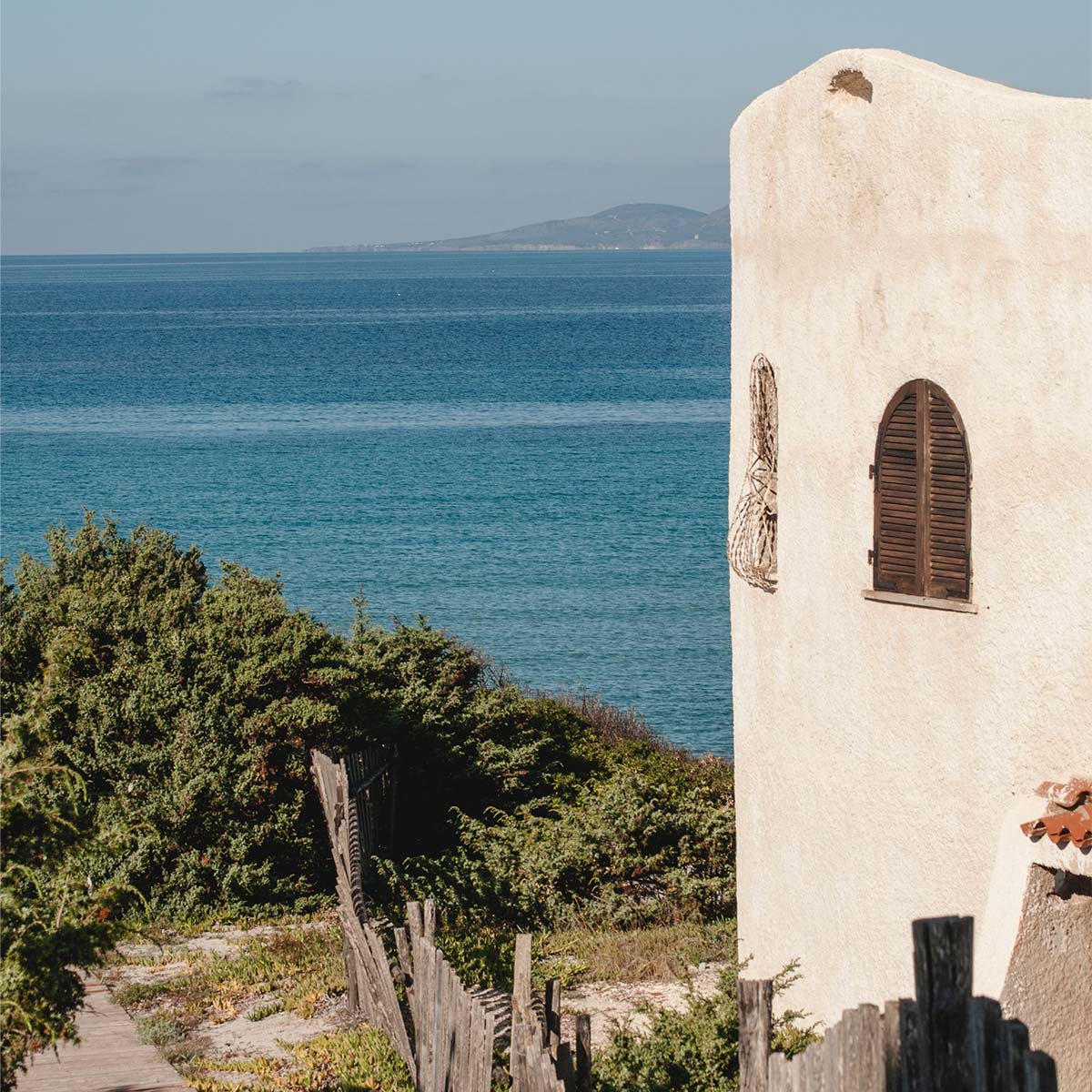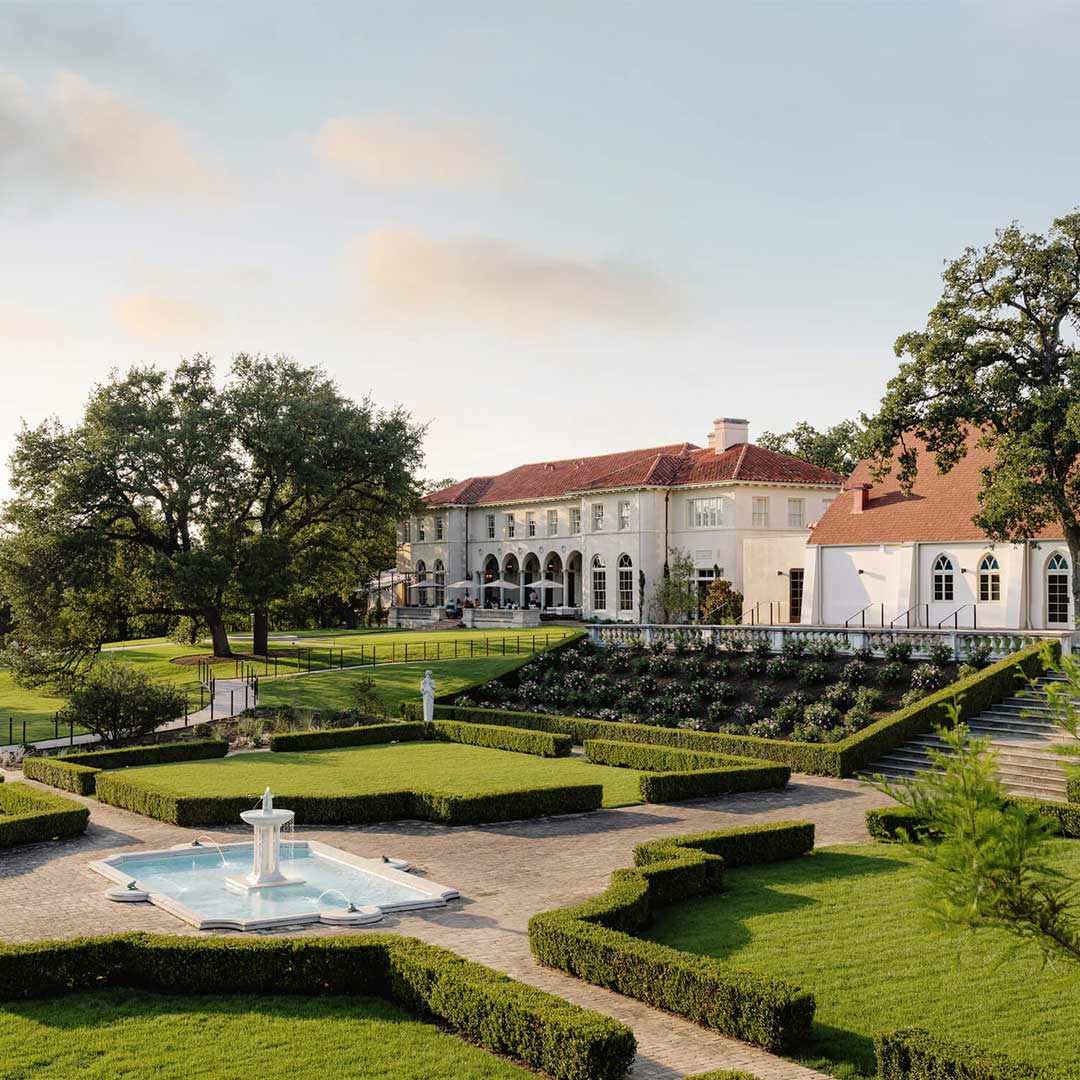"If you want to live longer and be healthier, don't try to change your behaviors, because that never lasts for the long run," explains Dan Buettner, "think about changing your environment.” Buettner is a longevity researcher who coined the term Blue Zones in a National Geographic article that examined five regions around the world where people not only live the longest (a staggering number of Blue Zone inhabitants reach centenarian status) but also enjoy the healthiest lives. Within the five Blue Zones—Okinawa (Japan); Sardinia (Italy); the Nicoya Peninsula (Costa Rica); Ikaria Island (Greece); and Loma Linda, California—people enjoy greater wellness by living in accordance with what Buettner termed the Power Nine:1. Movement incorporated throughout the day. 2. Knowing one’s life purpose (Okinawans call this “Ikigai” and the Nicoyans call this “plan de vida”). 3. Maintaining routines that shed stress and cultivate a calm mind. 4. Eating light in the evenings. 5. Consuming a plant-forward diet packed with legumes and veggies. 6. Enjoying a glass or two of red wine in the evening with friends and food. 7. Belonging to and staying involved in community. 8. Putting loved ones first before other obligations. 9. Having the right tribe that supports your healthy behaviors (Okinawans, for example, created ”moais”–groups of five friends that commit to each other for life). Whether you are setting your sights on living past 100 (not a bad goal) or you simply want to jump start this inarguably healthier lifestyle, a Buettner-approved temporary change of environment to a Blue Zone destination might be a smart move. Here, we highlight some of the secrets held within these longevity destinations, plus how to get there and where to stay.
Okinawa, Japan
 Entrance to Ryukyu Cuisine Mie restaurant in Naha, Okinawa. Photo: japantimes.co.jp.
Entrance to Ryukyu Cuisine Mie restaurant in Naha, Okinawa. Photo: japantimes.co.jp.
On the subtropical Japanese archipelago of Okinawa, there are 35 centenarians for every 100,000 inhabitants—five times more than the rest of Japan (which already has a very high average life expectancy). Within Okinawa, the village of Ogimi, located in the rural north of the main island, is where we recommend going to learn some lessons on how to live a joyfully healthy life beyond 100.
In the city of Ogimi, far removed from the tourist trail, society is structured so older residents retain purpose, or ikigai, in their lives. The word “retirement” doesn’t exist in the native dialect. Some in Ogimi find ikigai in the local craft of weaving basho-fu textiles, where the time-intensive cleaning of fibers and spooling of thread is done by groups of older women. Then there’s the way this society stresses mutual support through moai — a social mechanism that brings groups of people with a shared interest together, allowing them to develop deep emotional connections. Takashi Inafuku, head of one of Ogimi’s districts, belongs to two moai—one with a group of school friends and another with former co-workers. And finally there is the Okinawan diet, which features sweet potatoes, bitter melon, turmeric, heart-healthy fish, small servings of pork, and carotenoid-rich marine foods like seaweeds, and provides more than five servings a day of fruits and vegetables. Anthony Bourdain perfectly described their dietary philosophy: "For all the reverent rigidity of the mainland, Okinawa answers in its own unique way: Don't eat the same thing each day. That's boring. There's even an Okinawan term for it: chanpuru, 'something mixed'."
How to get there and where to stay: Typical of most Blue Zone epicenters, luxury hotels are sparse in Ogimi. Our top picks in Okinawa include the new eco-luxury Treeful Treehouse Sustainable Resort in the city of Nago (a 45 minute train ride from Ogimi). The resort is set to open later this summer, and features four design-forward treehouses overlooking the Genka River with 360-degree views of its tropical surroundings. Other options include the new Ritz Carlton (also located in Nago) with 97 rooms, a golf course, and views over the East China Sea, and the Halekulani Okinawa, which has a Blue Zone-focused “Secrets of Longevity” program. Created under the direction of Dr. Masashi Arakawa of Ryukyu University, a leading expert in wellness tourism research in Okinawa, the program includes three experiences: “Discover the Island’s Mabui (Soul),” "Discover the Island’s Umui (Spirit),” and “Discover the Island’s Glow,” each of which provides insight into the Okinawan way of life. These discovery trips also include buying native ingredients from the local markets and visiting the world’s first deep-sea-water hot spa facility. To experience some traditional fine dining be sure to reserve a table at Mie restaurant in Naha. We also recommend booking a kids-friendly cooking class offered by Taste of Okinawa which will cost $60 per person. The three-hour experience is facilitated by a bilingual Okinawan food enthusiast and includes a market visit and preparation of a four-course traditional menu.
Sardinia, Italy
 Sardinian coastline. Photo: Getty Images.
Sardinian coastline. Photo: Getty Images.
Separated from Italy by language, culture, history and geography, this idiosyncratic island, lost in the Mediterranean, has some of the world’s best farm-to-table food, idyllic beaches, and the highest concentration of male centenarians living in the mountainous highland regions of Ogliastra and Barbagia.
Sardinians are culturally isolated, and have kept to a very traditional, healthy lifestyle by continuing to hunt, fish, and harvest the food they eat. They also put family first: there are typically two or three generations living in the same household. And, when it's time to unwind, they talk, laugh and drink delicious, locally produced Cannonau wine (made from the Grenache grape) together. Because of the steep, mountainous nature of the landscape and the active “shepherd’s lifestyle,” they also get lots of low and medium intensity exercise all day long. Lunch is typically the largest and longest meal of the day, and consists of grains and legumes with some lamb or pork.
How to get there and where to stay: Fly into the airport of Olbia. From there you’ll have an hour-and-fifteen-minute drive to the city and commune of Nuoro in central-eastern Sardinia, which has a population of just 160,000. In the towns of Gavoi and Orgosolo, you’ll find that traditions have held fast: the denizens live a spartan yet fulfilling life, and it is also the birthplace of several renowned artists, including writers, poets, painters, sculptors. A quick Google search for “hotels in Nuoro Sardinia” served up 100 well-appointed bed-and-breakfasts. To make the most of your trip to the island, we suggest combining your visit to Nuoro with a few days on the magnificent northern coast. For accommodations there, you can’t go wrong with a stay at the new Hotel La Licciola on the Costa Smeralda, or Ma&Ma Grand Hotel on the archipelago of La Maddalena.
Nicoya Peninsula, Costa Rica
 Kasiiya Papagayo Resort, Nicoya, Costa Rica. Photo: Courtesy of resort.
Kasiiya Papagayo Resort, Nicoya, Costa Rica. Photo: Courtesy of resort.
The largest Blue Zone in the world, Nicoya is a peninsula off the northwest coast of Costa Rica. Most inhabitants live to at least the age of 90, and Nicoya’s proportion of centenarians is around three and a half times higher than the global average. Many of them live without the need for medication and don’t have any disabilities.
Interestingly, the longest-living residents of the Nicoyan peninsula don’t think they’re doing anything different or special than anyone else to live long lives. It seems living a long life is a lovely side effect of a fulfilling life in the sunshine. Researchers believe that the secret of this Blue Zone lies in living with purpose to serve family and community (Buettner calls this their “plan de vida”). Most centenarians in the region are below the poverty line but live with family, and are respected as sources of wisdom and experience. They live a simple life, have less worries, and their priority and source of happiness is family. "Their cities are set up so they’re bumping into each other all day long,” explains Buettner. “They walk to the markets, where they have conversations with people.” Their diet mostly consists of squash, corn, beans, and local fruits and vegetables. Also noteworthy is Nicoya’s water: it has the country’s highest calcium content, perhaps explaining the lower rates of heart disease and stronger bones.
How to get there and where to stay: Fly into the city of Liberia located in the Nicoya peninsula (you’ll find direct flights from Miami) and make sure to rent an all-wheel drive car (a horse would be a close second). The buzzier coastal settlements include Tamarindo (a.k.a. Tama), Santa Teresa, and Malpais, which have beautifully designed villas and small hotels, surf shacks and schools, artist and craft studios, as well as restaurants championing Costa Rican cuisine. For those craving luxury hospitality, stay at the Kasiiya Papagayo resort on the north side. Tent-topped timber platforms form guest rooms in this eco-resort, which the Paris-based studio AW2 completed without cutting down a single tree and without the use of concrete and nails. The resort is composed of 14 guest rooms stretching across 123 acres, and is completely solar-powered, while its cuisine is 90% organic produce sourced from local farms.
Ikaria Island, Greece
 Ikaria Island, Greece. Photo: Flickr.com.
Ikaria Island, Greece. Photo: Flickr.com.
Ikaria, a Greek island in the far east of the Mediterranean, is about 30 miles from the Turkish coast. With its beautiful coves, rocky cliffs, steep valleys and broken canopy of scrub and olive groves, Ikaria looks similar to any number of other Greek islands, with one big difference: the people here live much longer than the populations on other islands (and on the mainland). In fact, people here live on average 10 years longer than those in the rest of Europe and America – around one in three Ikarians lives into their 90s. Not only that, they also have much lower rates of cancer and heart disease, suffer significantly less depression and dementia, and remain physically active deep into their 90s.
The longest-living Ikarians reside in the island’s highlands, negotiating austere conditions where life has traditionally required hard work. If you ask Ikarian men and women in their 90s and 100s if they do any keep-fit exercise, the answer is always the same: "Yes, digging the earth." They exercise unintentionally by just gardening, walking to their neighbors' houses, or by doing their own yard work. The Ikarian diet features a lot of beans and home-grown produce, and not much meat or refined sugar. The locals also feast on wild greens, potatoes, goat's milk, and red wine. Other Ikarian habits include taking afternoon naps, fasting, and staying involved in community. At the heart of the island's social scene is a series of 24-hour festivals, known as paniyiri, which all age groups attend. On average, the collective villages host approximately six of these events each month during spring and summer. They last right through the night, and the centerpieces are mass dances in which everyone – teenagers, parents, the elderly, young children – takes part.
How to get there and where to stay: To arrive in Ikaria, you’ll have to take a propeller plane from Athens or a ferry—but prepare for unexpected hiccups. The island is renowned for its gusty winds, and there is a 50% chance that the plane might have to turn back due to unsafe landing conditions. The ferry services, at times, are on strike. The beaches are nice, but not comparable to the beauty of those in Santorini, Mykonos, Rhodes, or Ios. So, not surprisingly, Ikaria is a place unto itself. It's famous for living at its own pace—many shops, restaurants and cafes have their own opening hours, which are decided by the daily whim of the owners. While it’s not a destination chock full of 5-star resorts, the quaint Erofili Beach Hotel, located in the pretty fisherman's village of Armenistis, is a short hop to the beaches of Livadi and Messakti. Another solid option is the roomy Toxotis Villas, which is located on the hillsides of Armenistis and overlooks the islands of Chios, Samos & Mykonos.
Loma Linda, California
 Palm Springs is an hour's drive away from Loma Linda, California. Photo: Unsplash.com.
Palm Springs is an hour's drive away from Loma Linda, California. Photo: Unsplash.com.
Spanish for “beautiful hill,” Loma Linda, California is nestled between mountain peaks in the middle of the San Bernardino Valley. A community of about 21,000 Adventists in the Loma Linda area are the core of America’s Blue Zone region. These Adventists belong to the Seventh-day Adventist Church, a Millennialist Protestant Christian denomination that was founded in the 1860s in the U.S., and the name Seventh-day Adventist is based on the Church's observance of the "biblical Sabbath" on Saturday, the seventh day of the week. On average, they live as much as a decade longer than the rest of the country.
You’ll find this Blue Zone community spending a lot of time with other community members: sharing each other’s values, supporting each other’s habits, volunteering, and finding collective ways to give back. The Loma Linda Market near Loma Linda University has bin after bin of beans and grains, but there’s no meat section. The Adventists eat meat in moderation (many are vegan), snack on generous servings of nuts, and avoid consuming excessive calories in the evening. Saturday’s are dedicated to Church visits followed by an entire day of relaxing and rejuvenation.
How to get there and where to stay: If you decide to visit Loma Linda, keep in mind that, given its size, there isn’t much to do. The highlight of your visit might just be a conversation with a local family (so it isn’t a surprise that Loma Linda boasts exactly zero resorts). But if you’re still keen to check this Blue Zone off your bucket list, we recommend staying in Palm Springs, which is located an hour’s drive away. Our favorite hotels in the area include the new adult-only, pet-friendly Les Cactus, The Parker Palm Springs, or Holiday House. Another option is the wellness-minded Miramonte Resort in Indian Wells, which features a 12,000-square-foot spa.
Granted, it's not easy to emulate the Blue Zoners if you live in the U.S. where you’re likely to be tempted with cookies and cupcakes everyday. And maybe you don’t want to become a vegan. But you can always try to adapt the mindset of a Blue Zone habitant, which is often more about living in the present and giving back than masterminding a grand plan to live to 100. One of the things Buettner has found that unites the elderly inhabitants of all the Blue Zones is that they are unintentionally old: they didn't set out to extend their lives. "Longevity happened to these people," he says. And, by giving more of our attention to family, friends, sunshine, travel, and fresh food, perhaps we can also unintentionally add a few years to our lives.




Leave a comment
This site is protected by hCaptcha and the hCaptcha Privacy Policy and Terms of Service apply.